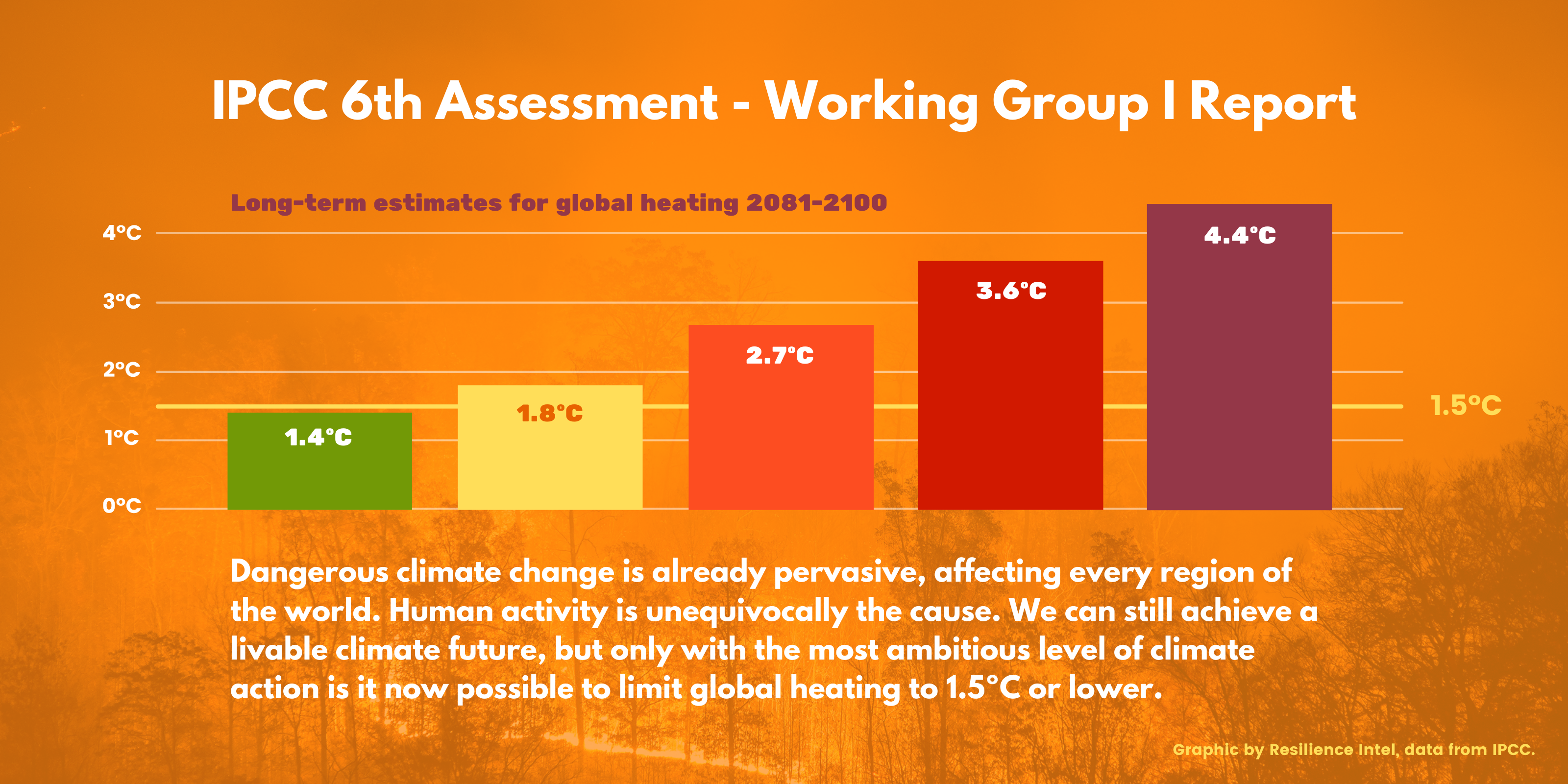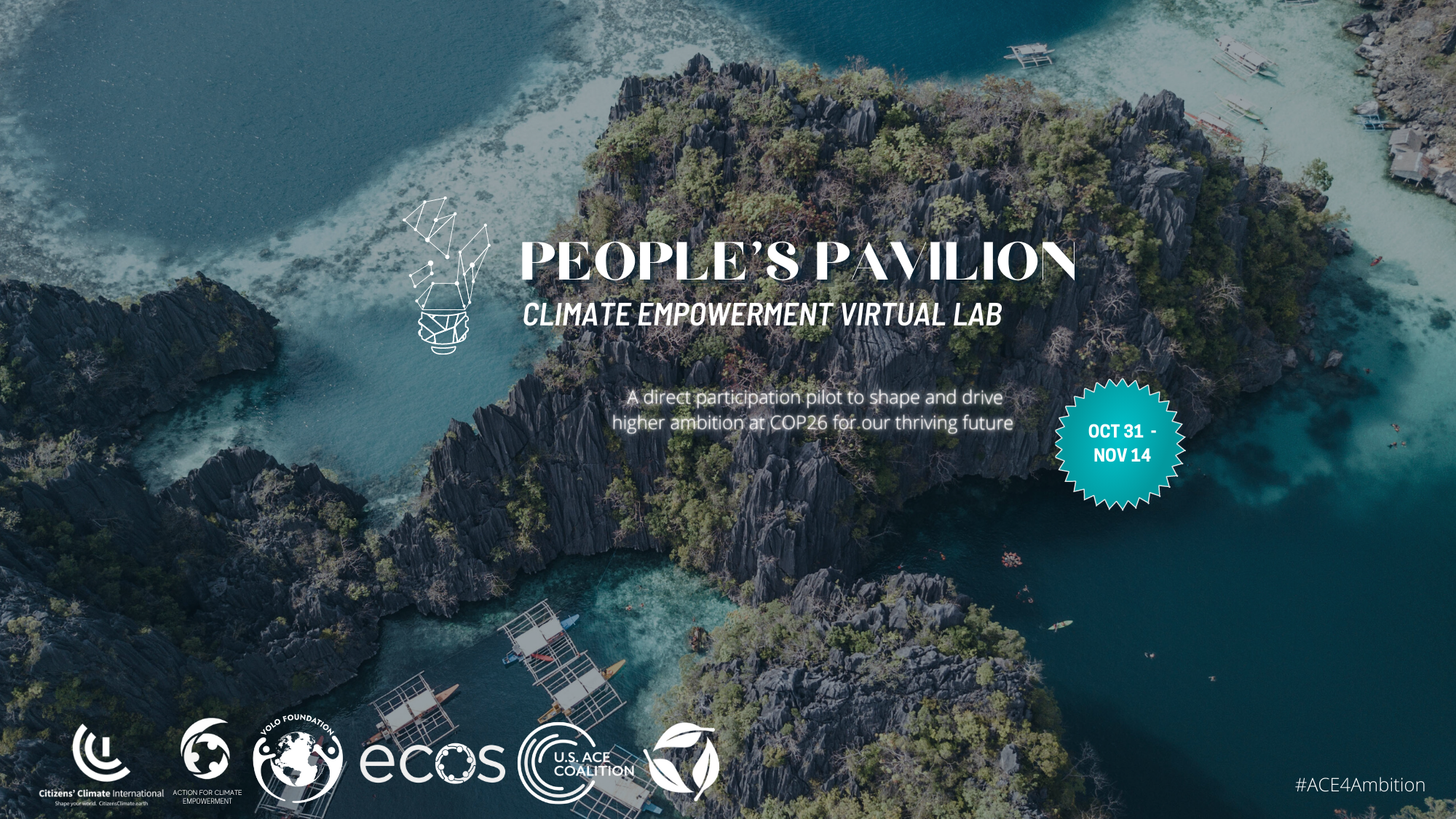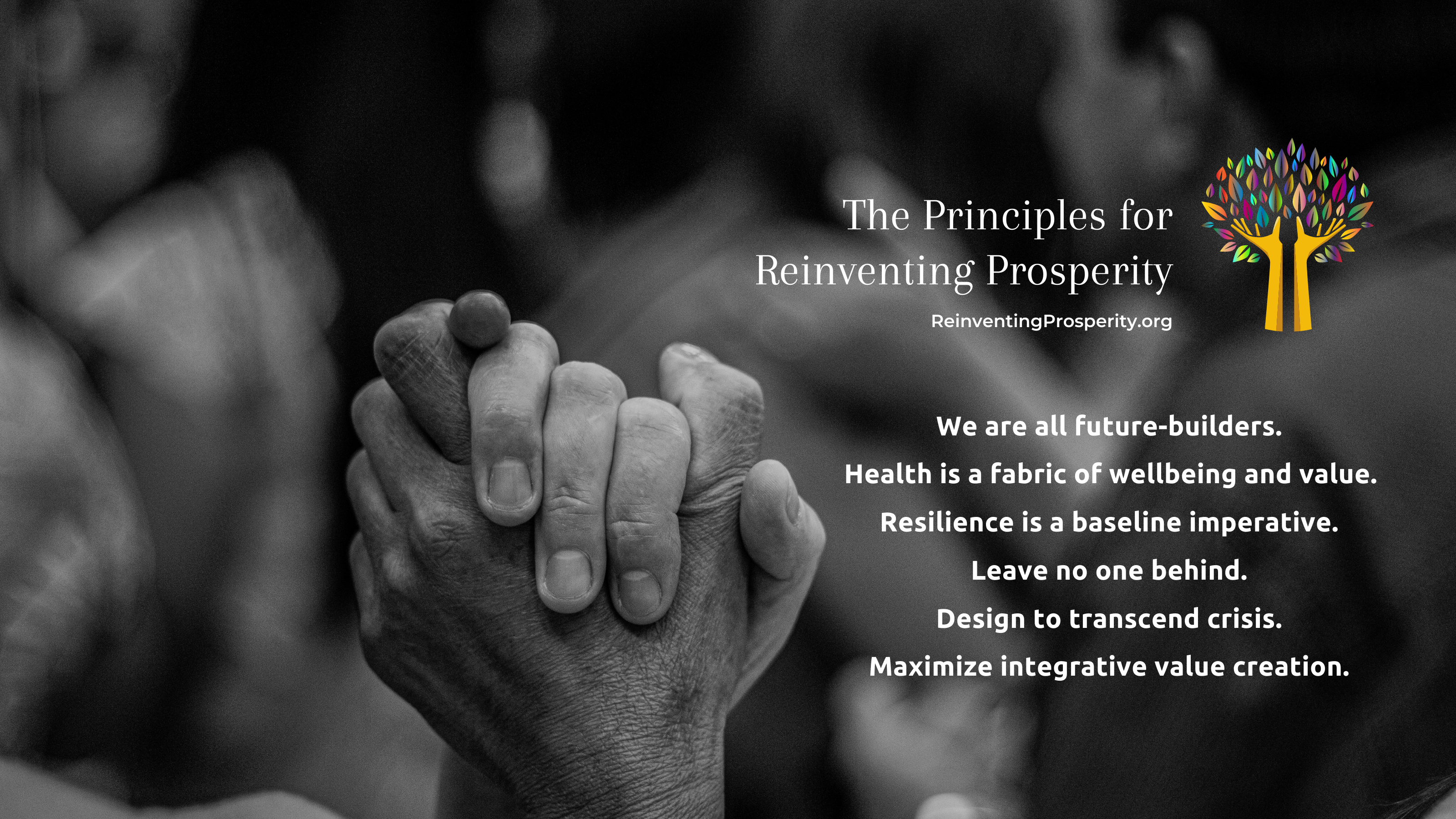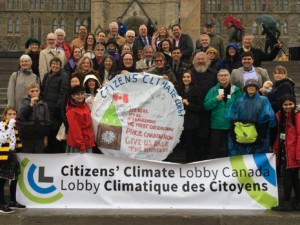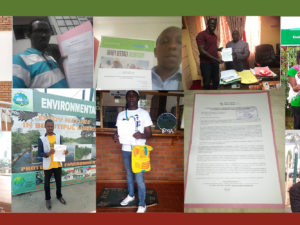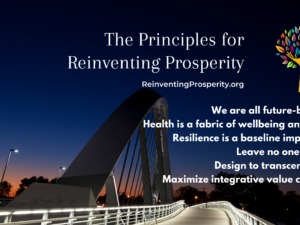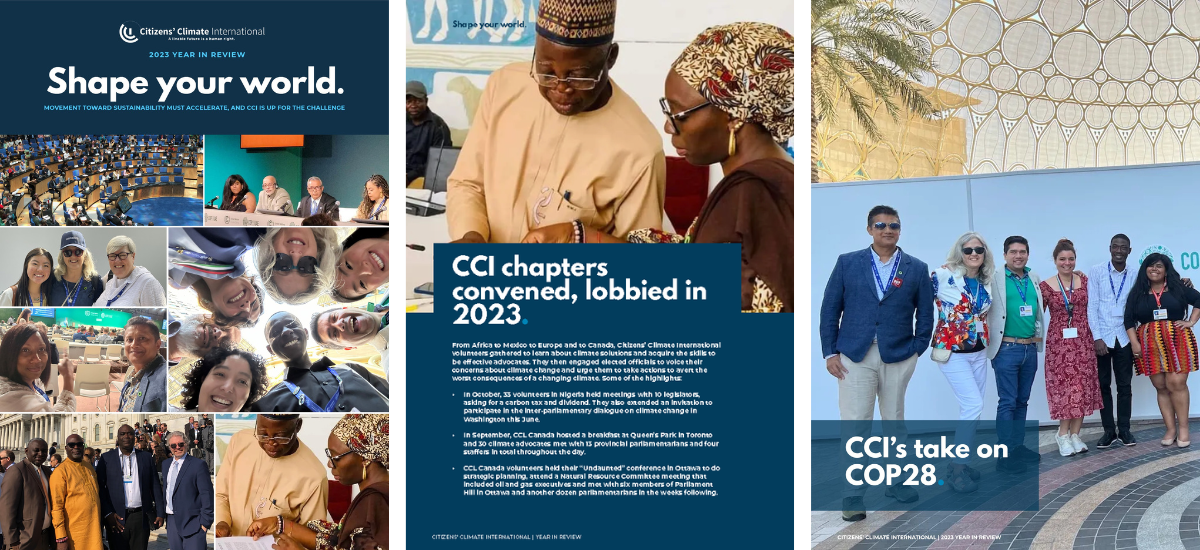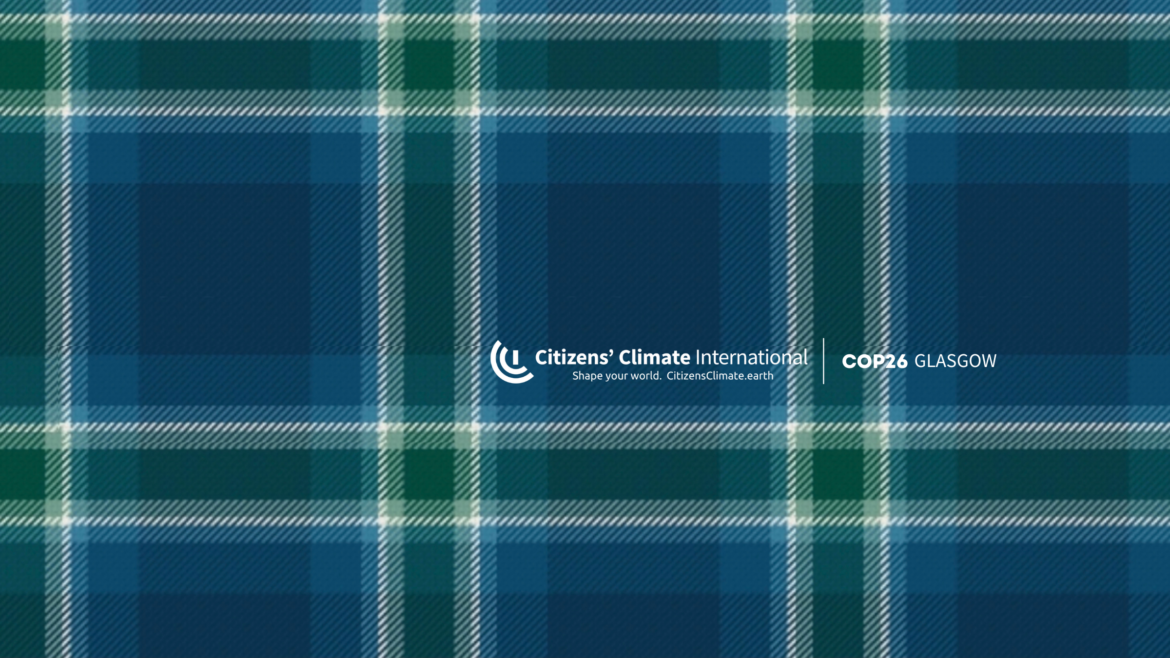
We cannot afford for climate action to move more slowly than climate emergency. The COP26 must achieve a radical upgrade of global ambition, active cooperation, and high-value everyday innovation.
The United Nations Framework Convention on Climate Change (1992) set the mandate “to prevent dangerous anthropogenic interference with the climate system”. The Paris Agreement (2015) brought all nations into the action agenda, created a mechanism for steadily “ratcheting up ambition”, and called for a scientific report to determine whether global heating above 1.5ºC was tolerable.
The Intergovernmental Panel on Climate Change (IPCC) Special Report on Global Warming of 1.5ºC made clear global average temperature rise of that level must be considered the danger threshold. Beyond 1.5ºC global average temperature rise, some small island nations will vanish beneath rising seas, major food growing regions will face serious risk of harvest collapse, extreme climate impacts will generate unprecedented mass migration, and nation-state destabilization could become commonplace.
The COP26—the 26th Conference of the Parties to the Convention—brings together leaders from 196 nations and thousands of observer organizations, to detail national climate action commitments, settle on operational rules for cooperative emissions reduction, and mobilize unprecedented levels of climate-related finance. The result must be a mainstreaming of science-based pathways to zero emissions economies by mid-century, on schedule to avoid more than 1.5ºC of global heating.

To get there, a few key areas of climate action need to be worked out:
- All nations must agree that they will fully decarbonize their economies by 2050.
- “Cooperative implementation” must align with 50% reductions in overall global heating emissions by 2030.
- Science-based financial decision-making must have clear pathways to becoming the mainstream reality.
- Food systems, ecosystem restoration, clean watershed services, and climate-smart agriculture, all need to become part of the mitigation, adaptation, and resilience program of every country.
- Forward progress must be reinforced by science-based trade policy, opening opportunity for climate-smart practices and reducing the market for destructive practices.
None of the above are easy, on their own, but the high-value principles for a science-based resilience-building economy become apparent when you take all of the above together. The cost of failure is too high for any country to tolerate major investments from any trading partner seeking fossil fuel revenues after 2040. The scientific, economic, and fiscal stability case is strong for ending all fossil fuel exploration as soon as possible.
What the Science Says
We take note of the August report of Working Group 1 on the Physical Science Basis for the 6th Assessment of the Intergovernmental Panel on Climate Change (IPCC), which found:
- Human activity is destabilizing Earth’s climate—the scientific evidence is “unequivocal”;
- Dangerous global heating of 1.5ºC will arrive by 2040;
- Action to end global heating pollution must be swift and pervasive;
- Only in the most ambitious climate action scenario can warming be brought back below 1.5ºC, by the end of the century.
Above 1.5ºC of global heating, dangerous climate destabilization will impose unprecedented levels of harm and cost. The United Nations Secretary-General called the report “a red alert for humanity”.
Future economic prosperity will depend on a nation having the ability to leverage zero marginal cost renewable energy systems, light-speed science data platforms, and inclusive sustainable development initiatives, rooted in community experience, to expand the means of value creation by building resilience. The Glasgow Financial Alliance for Net Zero (GFANZ), which brings together $88 trillion in a commitment to work toward science-based targets, signals that the biggest opportunities for mainstream investment return will lie with innovations aligned with 50% decarbonization by 2030 and net zero by 2050.
Transformation depends on participation.
At Citizens’ Climate International, we recognize the need for active, ongoing citizen participation in the design and implementation of climate policies. We must acknowledge the direct impact of climate threats and costs to basic and universal human rights and the critical judicial precedent of several nations’ supreme courts recognizing that climate protection is a human right.
When we talk about energy systems, climate science, and national policy, we often overlook the degree to which universal human rights are structural imperatives that should shape all of these. Progress toward recognition of climate rights will be instrumental for providing clarity, structure, direction, and momentum for innovation, across all sectors.
The Paris Agreement acknowledges “that climate change is a common concern of humankind” and requires that all countries:
respect, promote and consider their respective obligations on human rights, the right to health, the rights of indigenous peoples, local communities, migrants, children, persons with disabilities and people in vulnerable situations and the right to development, as well as gender equality, empowerment of women and intergenerational equity…
What is decided at the COP26 should give life to not only national climate action and investment, but also to locally rooted innovation, investment, and development activities. If the best work is done, and the optimal outcomes achieved, every part of human experience can be improved by effective climate cooperation.
Our Agenda at COP26
To connect needed areas of action to specific capabilities, Citizens’ Climate International comes to the COP26 negotiations with a focus on the following areas of action:
- Civics and public participation
- Pollution pricing
- Climate-smart finance
- Nature, from summit to sea
- Food systems
On Civics and Participation: We see regular, ongoing engagement of citizens, communities, and stakeholders in both the design and deployment of climate solutions, as critical for securing high ambition and efficient implementation.
- Action for Climate Empowerment—the UNFCCC agenda area based in Article 6 of the Convention and Article 12 of the Paris Agreement—offers nations real practical leverage for enhanced climate action, through science-informed, locally rooted, multi-faceted stakeholder networks.
- The People’s Pavilion is an extension of our Engage4Climate and OpenCOP work, intended to provide a means of engaging with the COP process for people who are not attending or accredited.
On Pollution Pricing: We support establishment of a global “price floor”, supported by national policies to impose a steadily intensifying price signal disfavoring climate pollution. As the IEA has reported, “There is no need for investment in new fossil fuel supply…” Pricing systems should effectively and efficiently eliminate climate pollution while building incomes for people and enhancing international cooperation for a zero-emissions future.
- The Cooperative Implementation segment of the UNFCCC process deals with market-based and non-market approaches (NMA) to international cooperation for overall mitigation of global emissions (OMGE).
- Not only do emissions trading systems (ETS) fit within the scope of Cooperative Implementation, but so do national-level tax policies, subsidies, incentives, and emissions accounting requirements for traded goods.
- The COP26 can set agreed standards for cooperative carbon accounting that rewards faster, more verifiable decarbonization in non-Paris NMAs, steady forward progress in OMGE and “coordination across instruments”, recognition of stakeholders’ rights to climate security, and encouragement of policies and incentives that catalyze climate neutrality in all sectors.
- We favor climate income policies that steadily intensify pollution pricing while shifting economic agency to households, as an efficient way for countries to drive rapid, economy-wide decarbonization and sustainable development strategies.
On Finance: We support the goal of not only mainstreaming climate-smart finance, but achieving a world in which no money generates climate damage. Public, private, and multilateral finance must rapidly shift into alignment with a zero-emissions future; the fiscal stability of nations must be measured against this science-informed imperative. Climate-smart finance must integrate complex, rapidly evolving Earth systems science data, and foster a decentralized landscape of innovation, Nature-positive production, and resilience-building everyday actions.
- The Financial Stability Oversight Council (FSOC) recently published a landmark 133-page report outlining the risk unchecked climate disruption poses to the financial stability of the United States, across all sectors.
- Our Resilience Intel initiative aims to connect Earth science data systems to financial decision-support platforms, to provide useful insight into the resilience-building (or depleting) value of specific investments.
- We will release, on November 3, which is Finance Day at the COP26, the Year 1 report on the Principles for Reinventing Prosperity, which aim to connect COVID recovery, climate-smart finance and innovation, and resilience efforts.
On Nature: We take note of the need for much more robust national and cooperative international integration of a Summit to Sea resilience value approach. We need to value, invest to sustain, and safeguard a healthy cryosphere, feeding healthy watersheds and land-based ecosystems, sustaining biodiversity, and preventing harm to ocean life and to the climate chemistry of our ocean.
- The loss of sea ice, mountain glaciers, and ice sheet mass removes a cold anchor of our climate system and depletes fresh water supplies on land.
- Watersheds and ecosystems work together to provide the foundations for not only agriculture, but for livable microclimates and stable infrastructure.
- Investing in ocean health and resilience, which is critical for human security and wellbeing, must start upstream and include all areas of human activity on land.
Food Systems integrate many of the above areas of action. Without a healthy crysophere, stable climate patterns, reliable rainfall, resilient watersheds, ecosystems, and biodiversity, food security is not achievable. Climate action driven by food systems transformation will require:
- regenerative farming and other sustainable land management practices;
- new kinds of finance, decentralized multisystem data integration, and pollution pricing linked to Nature-positive production;
- local participatory process to ensure optimal policy design, protection of basic rights, and inclusive sustainable development.
The Good Food Finance Network is a leading example of how innovative resilience-building finance, investment in ecosystems, watersheds, and biodiversity, and food systems transformation can come together to expand the space for climate action and diversify the means of delivering new opportunity to rural and marginalized communities. The Network brings together leaders in the public, private, and multilateral finance sectors, to foster cooperative innovation and accelerated mobilization of net-zero Nature-positive finance.
We must act together, in solidarity, to secure a livable future.
The COVID, climate, and biodiversity crises together put clear light on the value of solidarity. Solidarity among people, and between nations and generations, and with Nature, is not only an emotional, cultural, or political preference. Recognizing that human and natural systems, our everyday wellbeing, the security of nations, and the livability of the world we leave to future generations, are all part of One Health is already visible as the defining insight of our moment.
The COP26 needs to send the signal that this urgent need for swift action in solidarity is recognized by the community of nations. That signal must be reinforced by coordinated, high-ambition climate action, and by the mobilization of unprecedented financial resources. We don’t need to make money out of thin air; we just need it to be realigned—to stop funding destruction and start investing in health and resilience.
This is a UNFCCC process note from Citizens’ Climate International.
Additional Resources
UNFCCC Documents
- UNFCCC Glasgow Climate Conference (COP26) homepage
- COP26 President Designate Reflections Note
- Information for COP26 Participants (A-Z)
- The Paris Agreement
- Public Webcast Portal
COP26 COVID Rules & Procedures
- COP26 COVID-19 Testing Guidance
- Full Detail of COP26 COVID-19 Testing, Tracing & Isolation Rules
- Daily COVID-19 self-test reporting site
- COVID safety measures to ensure an inclusive COP26
- COP26 Delegates page
Citizens’ Climate Reports & Submissions
- The PARIS Principles
- Formal submission on public participation (2020)
- Principles for Reinventing Prosperity
- ACE4Ambition Program: Civics to foster Science Activation
- The People’s Pavilion
Our reports from COP26
- Reinventing Prosperity 1 Year Report
- CCI welcomes COP26 commitments to rapidly cut global heating pollution
Allied Initiatives
- Carbon Pricing: The International Climate Income Alliance
- Food Systems: The Good Food Finance Network
- Indigenous Peoples: The Nayzul Declaration
- Ocean Economy: Invest at the Source
- UNFCCC Process: Climate Action Network International (PDF)
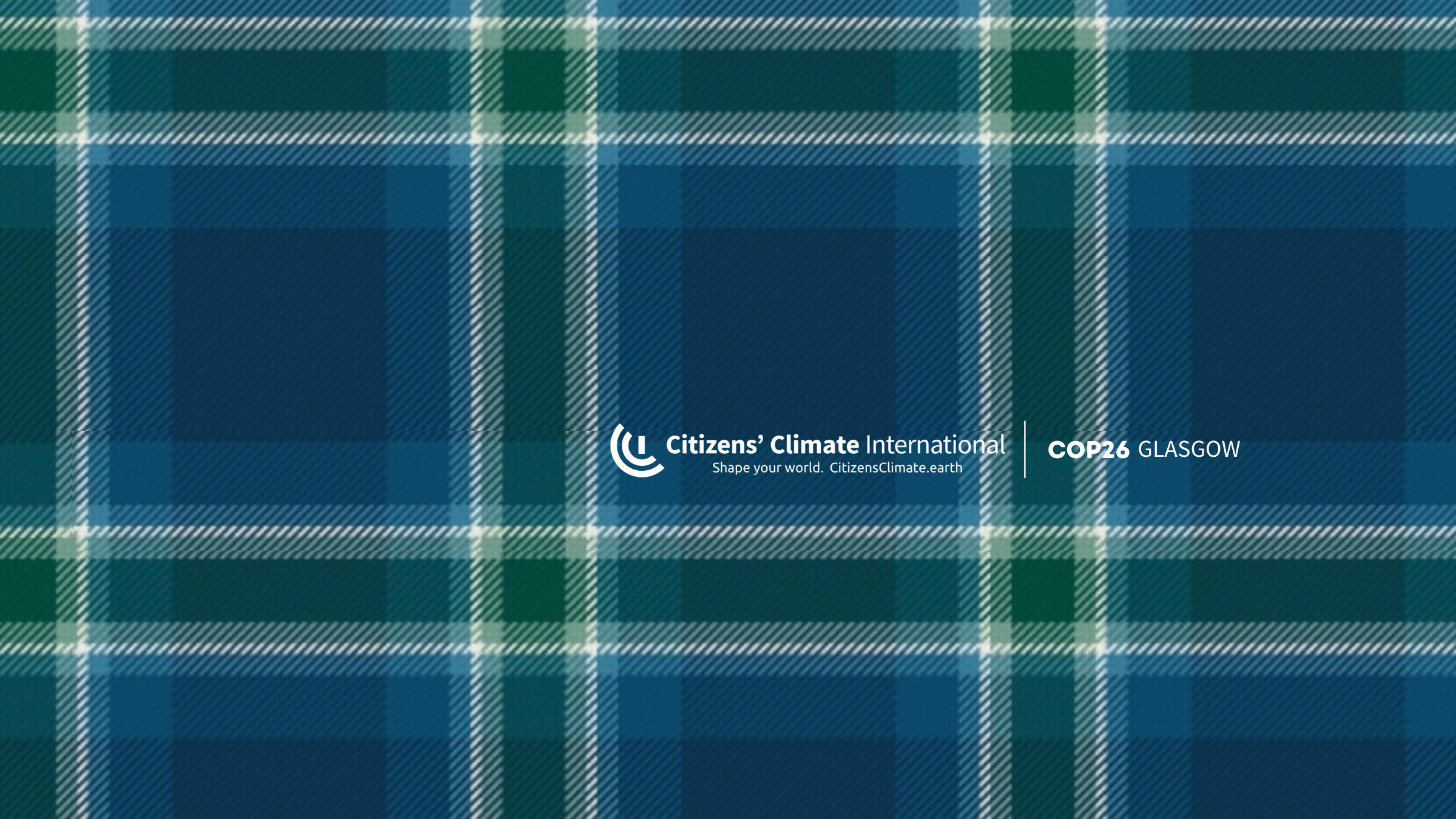
The CCI “Blue Planet” tartan was created to commemorate our team’s participation in the COP26 UN Climate Change negotiations in Glasgow. The tartan is symbolic of a way of seeing planetary systems and our responsibility to act as responsible stewards:
- Deep blue anchors the design, representing the ocean.
- Medium blues at edges represent watersheds.
- The lightest blue color represents the atmosphere.
- Green squares and rectangles represent arable land, forests, and ecosystems.
- White is the cryosphere—the thin, icy layer of climate control, often far away from our thoughts—anchoring a stable climate that provides sustenance and wellbeing across the blue and green spaces of the biosphere.
- The human relationship with Nature is implicit throughout, both in the design interweaving planetary systems and in the conscious awareness that science draws clear evidentiary connections between human activity and the life of those planetary systems.


